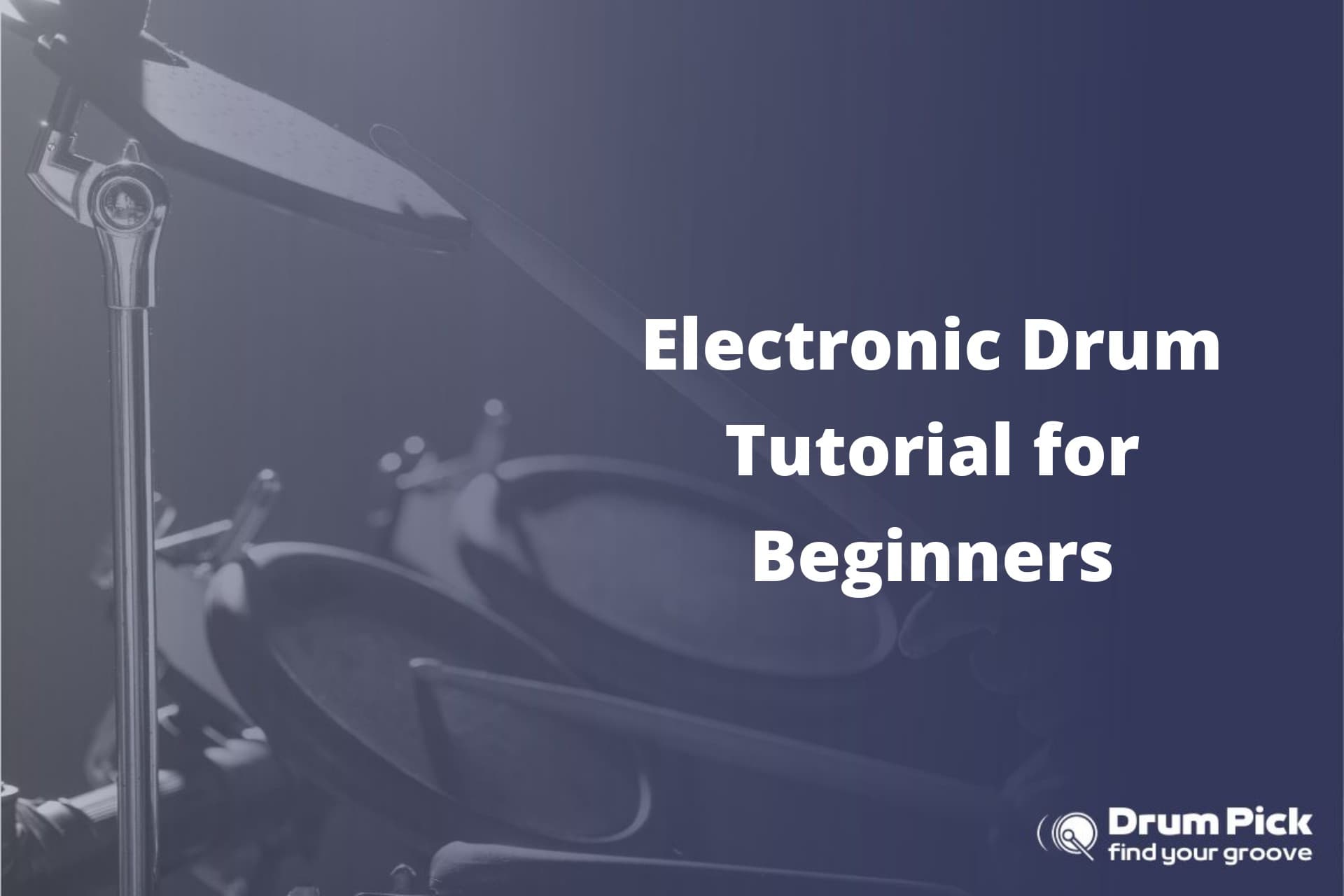Are you a beginner looking to learn how to play the drums? Look no further! This electronic drum tutorial is designed just for you.
In this article, we’ll guide you through:
- Choosing the right electronic drum kit
- Understanding different drum pad types
- Setting up your kit
We’ll also teach you:
- Basic drumming techniques
- Explore drum sounds and presets
- Help you master essential drum rudiments
Get ready to improve your drumming skills and have a blast!
Choosing the Right Electronic Drum Kit
When choosing the right electronic drum kit, you’ll want to consider factors such as your budget and the features you need. Comparing electronic drum kits can be overwhelming, but with some knowledge, you can make an informed decision.
Firstly, think about your budget. Electronic drum kits can range from a few hundred dollars to several thousand, so it’s important to set a budget that suits your needs.
Next, consider the features you need. Some drum kits offer a wide range of sounds and effects, while others may have limited options. Think about the type of music you want to play and the sounds you’ll need to achieve that style.
Additionally, consider the number of pads and cymbals you’ll need. Most electronic drum kits come with a basic set of pads, but if you’re an advanced drummer, you may want to invest in a kit with more options for customization.
Lastly, don’t forget to research the brand and read reviews from other drummers. This will give you a better understanding of the quality and durability of the drum kit you’re considering.
Understanding the Different Drum Pad Types
To understand the different drum pad types, you’ll need to know what each one is designed for. Here are the main types of drum pads you’ll come across:
- Rubber Pads: These are the most common drum pads and are usually found on entry-level electronic drum kits. They provide a good bounce and are durable, making them great for beginners. However, they may not offer the most realistic feel.
- Mesh Pads: These pads have a mesh head that mimics the feel of an acoustic drum. They’re more responsive and offer a more realistic playing experience. The downside is that they can be more expensive and require more maintenance.
- Silicone Pads: These pads offer a quieter playing experience, making them ideal for practice in apartments or shared spaces. They’re also more durable than rubber pads. However, they may not provide the same level of bounce.
- Mylar Pads: These pads are made from a thin sheet of mylar stretched over a hard surface. They offer a good balance between durability and responsiveness. However, they can be more expensive than rubber pads.
- Size: Drum pads come in various sizes, ranging from small practice pads to larger pads that mimic the size of acoustic drums. Smaller pads are great for practicing rudiments and improving technique, while larger pads offer a more realistic playing experience.
Understanding the different drum pad materials and sizes will help you choose the right drum kit that suits your needs and preferences.
Setting Up Your Electronic Drum Kit
Now that you’ve a good understanding of the different drum pad types, it’s time to set up your electronic drum kit.
To ensure optimal performance, start by carefully placing the drum pads in a comfortable and accessible position for your playing style.
Next, connect the cables correctly, making sure to match the corresponding inputs and outputs.
Properly setting up your electronic drum kit will enhance your drumming experience and allow you to fully enjoy the benefits of this versatile instrument.
Optimal Drum Pad Placement
Make sure your drum pads are positioned in a way that allows for optimal playability and comfort. Proper drum pad positioning is essential for a smooth and enjoyable drumming experience. Here are some tips to help you achieve the best placement for your electronic drum kit:
- Height: Adjust the drum pads to a height that feels comfortable for you. They should be within easy reach, allowing you to strike them without straining your arms or wrists.
- Angle: Tilt the drum pads slightly towards you to ensure a natural drumming motion. This angle will help you maintain control and accuracy while playing.
- Spacing: Arrange the drum pads in a way that mimics the layout of an acoustic drum set. This will help you develop muscle memory and make transitioning between the electronic and acoustic drums easier.
- Ergonomics: Consider the overall ergonomics of your drum kit. Ensure that your posture is correct and that you aren’t straining any part of your body while playing.
- Sensitivity Adjustment: Adjust the sensitivity of each drum pad according to your playing style. This will prevent unintentional triggering of sounds and ensure that the pads respond accurately to your strikes.
Connecting Cables Correctly
Ensure that you connect your cables correctly to avoid any audio or signal issues. Proper cable management is crucial for maintaining the quality of your electronic drum set’s sound. By following a few simple steps, you can troubleshoot common cable issues and improve your overall playing experience.
Here is a table that illustrates the correct cable connections for your electronic drum set:
| Component | Cable Type | Connection |
|---|---|---|
| Drum Module | MIDI cable | Connect the MIDI Out on the module to the MIDI In on your computer or sound system. |
| Drum Pads | Trigger cables | Connect the trigger cables to the corresponding inputs on the drum module. |
| Hi-hat Controller | Hi-hat cable | Connect the hi-hat cable to the hi-hat controller and the drum module. |
Basic Drumming Techniques for Beginners
You’ll quickly improve your drumming skills by mastering basic drumming techniques. Here are some key techniques to focus on:
- Stick Grip: Ensure you’ve a proper grip on the drumsticks, with your fingers wrapped around the stick and the fulcrum point between your thumb and index finger.
- Hand Position: Position your hands at a 45-degree angle to the drumhead, with your wrists relaxed and your fingers slightly curved.
- Drum Rudiments: Practice drumming exercises such as single strokes, double strokes, paradiddles, and flams to improve your coordination and control.
- Bass Drum Technique: Learn how to use your foot to play the bass drum by practicing heel-toe technique or slide technique, depending on your preference.
- Dynamics: Experiment with different levels of volume by varying the strength of your strikes. This will add depth and expression to your drumming.
To excel in these techniques, it’s advisable to find the right drum teacher who can guide you through proper form and provide personalized feedback. A skilled instructor will help you develop a solid foundation and prevent bad habits from forming. Look for someone with experience, a good teaching style, and a positive attitude.
Remember, practice is key, so make sure to allocate regular time for drumming exercises and stick with it.
Happy drumming!
Exploring Drum Sounds and Presets
When exploring drum sounds and presets, don’t forget to experiment with different settings to find the perfect sound for your style. Customizing drum sounds can bring a unique flavor to your music and help you stand out as a drummer. One way to customize your drum sounds is by experimenting with drum effects. These effects can enhance the overall sound and add depth to your beats.
To get started, let’s take a look at a table that showcases some common drum effects and their descriptions:
| Effect | Description | Example |
|---|---|---|
| Reverb | Adds a sense of space and depth to the sound | Creating a big arena-like sound |
| Delay | Repeats the sound with a time delay | Adding a rhythmic echo effect |
| Distortion | Adds grit and aggression to the sound | Giving your drums a more aggressive rock sound |
By playing around with these effects and adjusting the settings, you can create a wide range of drum sounds to match your personal style. Don’t be afraid to experiment and push the boundaries of what is considered traditional. Remember, the goal is to find the perfect sound that resonates with you and your music.
Mastering Essential Drum Rudiments
Mastering essential drum rudiments is crucial for developing your drumming skills and becoming a well-rounded drummer. By practicing these foundational patterns, you can improve your speed, coordination, and overall technique.
Here are five advanced drum rudiments that will take your drumming to the next level:
- Paradiddle: This rudiment consists of alternating single and double strokes. It helps develop coordination between your hands and improves your ability to play syncopated rhythms.
- Flam: The flam is a technique where you play two notes almost simultaneously, with one slightly softer than the other. This rudiment adds texture and accents to your playing.
- Drag: A drag is a grace note played before a primary note. It adds a subtle, swinging feel to your drumming and enhances your ability to play with dynamics.
- Swiss Army Triplet: This rudiment combines single strokes, double strokes, and a flam into a challenging pattern. It helps develop speed, control, and coordination between your hands and feet.
- Six Stroke Roll: This rudiment consists of three double strokes. It improves your ability to play fast, controlled rolls and adds complexity to your drum fills.
By incorporating these advanced drum rudiments into your practice routine, you’ll see significant improvements in your speed, coordination, and overall drumming abilities. Remember to start slow and gradually increase the tempo as you become more comfortable with each pattern.
Happy drumming!
Tips for Practicing and Improving Your Drumming Skills
To improve your drumming skills, focus on consistent practice and setting specific goals for yourself.
One aspect that’s crucial to work on is improving your timing. Timing is the backbone of any good drummer, and it can make or break a performance. A great way to work on your timing is by playing with a metronome. A metronome is a device that produces a steady beat at a specific tempo, helping you stay in time and develop a strong sense of rhythm.
Start by setting the metronome to a slow tempo and play along, making sure to hit each beat precisely. As you become more comfortable, gradually increase the tempo to challenge yourself.
Another tip for improving your drumming skills is to break down complex patterns into smaller parts. This will allow you to focus on each component and master it before putting it all together.
Conclusion
So, there you’ve it, aspiring drummers! With this electronic drum tutorial, you’re well on your way to becoming the next Keith Moon or Dave Grohl.
Remember, choosing the right drum kit, understanding the different pad types, and setting up your kit correctly are crucial for your drumming journey.
Don’t forget to practice those basic techniques, explore different drum sounds, master essential rudiments, and most importantly, have fun!
Get ready to rock the stage and leave your audience in awe with your awesome drumming skills.
Keep drumming, and may the beat be with you!




